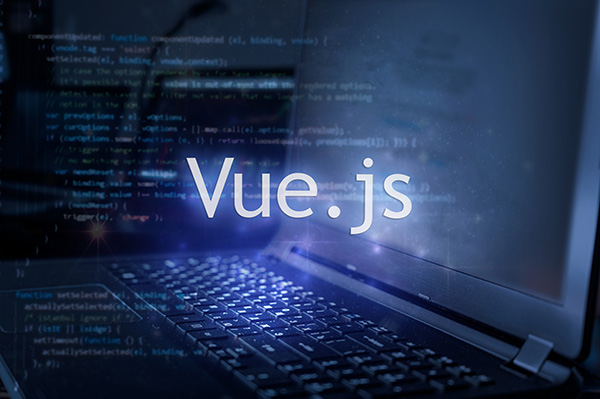Frontend technology and headless CMS continue to make huge strides as consumer experiences span several digital channels across mobile, web, smartwatches, digital ad boards, and IoT devices.
For the ninth year running, JavaScript continues to be the most used programming language in the world, according to the 2021 Stack Overflow developer survey. There are many JavaScript libraries and frameworks for frontend development like Angular, Vue, and React. Vue is one of the fastest-rising web development frameworks with 18.97% of developers using it in 2021 as opposed to 15.3% in 2019.
With the Vue.js framework, you can design cross-platform mobile and web applications. To integrate content directly into these applications, you will need a headless CMS. In this article, you’ll learn about Vue and how to leverage it with headless CMS to build digital experiences your users will love.
Quick Introduction to Vue.js
Vue is a JavaScript framework created by Evan You and officially released in 2015. With Vue, developers can build frontend interfaces for web and mobile applications.
Vue is built from the ground up and offers greater adoption and flexibility, unlike other monolithic frameworks. It focuses only on the view layer, making it easily integrable to existing libraries or projects. It is highly suitable for building single-page applications. For instance, you can write in HTML and JavaScript or prefer to include others like JSX, TypesScript, and CSS.
Similar to React, Vue uses a component-based approach for building interfaces. You can then break down your application into smaller pieces (components) and you can assemble it into a more complex form. That has led to its rise and adoption among several top companies like Alibaba, Behance, and Xiaomi.
Why is Vue increasingly becoming a popular choice for frontend development among numerous developers today? The following features and benefits of Vue will give you a glimpse.
- Simplicity: Vue is easy to learn and understand, meaning you can start with your knowledge of CSS, JavaScript, and HTML if you don't have detailed knowledge of advanced syntax or libraries such as TypeScript and JSX.
- Virtual DOM rendering: Vue provides a virtual DOM just like the one in React that enables you to render only the changes to the component state rather than the entire page.
- Robust tooling ecosystem: Vie works well with several available tools, functions, and plugins for better development through the Vue CLI 3. With it, you can integrate TypeScript, Babel, install plugins, access server renderer function, web browser debugging tool, and a state manager.
- Community: Vue has an active and growing community that is always on hand to offer solutions and provide extensive knowledge and understanding of the framework. It has over 30,000 forks on Github and more than 80,000 Vue-related tags on Stack Overflow.
- Component-based approach: In Vue, every part of an application consists of components. Each component represents an element or feature of the interface, enabling easier readability and reusability.
- Intuitive Documentation: A crucial benefit of Vue is its rich and detailed documentation. It is constantly improved on and updated with several use cases. The documentation contains in-depth explanations about various aspects of the app, including installation, scaling, and responsiveness.
- High Performance: The speed of Vue applications is incredible. Not satisfied with being one of the fastest frameworks available, it also provides functional SPAs and UIs with outstanding user experiences.
- Lightweight: Vue is a relatively light application--less than 18 KB-- that's both fast to download and enhances your UX. It leaves you in a much more advantageous position than other frameworks such as React and Angular when it comes to speed.
How Vue and a Headless CMS Work Together?
Headless simply means a frontend agnostic API first approach to development. Headless CMS allows you to manage and deliver content through APIs to any frontend framework you desire.
To enjoy the best of both worlds--frontend and backend--businesses must embrace platforms that offer great user experiences, increased flexibility, and extensibility to boost revenue.
Vue provides a progressive application and unparalleled flexibility for developing immersive digital experiences. That means you can deliver content directly to your Vue web and native application, allowing you to deliver multi-channel experiences across many devices. Vue offers an incredible opportunity for businesses to create an exceptional user experience and boost revenue.
By combining Vue with a headless CMS, you can propel your application’s digital experience to impressive heights. Do you know why? You’ll find out in the next section.
Benefits of Using Vue With a Headless CMS
There are numerous advantages to using Vue with a headless CMS. The most important benefit is centralized content delivery across multiple channels. The other benefits include:
API-first Approach
The nature of APIs makes them available to nearly any application or device. With a headless CMS, developers can build applications in any frontend framework they prefer without having to learn new software or language.
Flexibility and Integration Capabilities
The beauty of a headless CMS is that you can deliver content through GraphQL and Rest APIs to any framework of choice. On top of this, the lightweight nature and versatility of Vue make it an ideal choice for a headless CMS.
Performance
It takes a consumer an average of 3 seconds to wait for a website or page to load. That means you have limited time to impress your brand on the user, deliver an engaging experience, and finally encourage the consumer to make a purchase decision.
A Vue application can easily query and filter data on-demand to any device by leveraging the features of a headless CMS. Vue's superior performance and optimization make it an ideal option for web development, saving you time and money, guaranteeing high uptime, and improving performance.
Developer-friendly
A headless CMS platform offers developers easy customization and easy integration of scalable features to address their content deployment needs. Moreover, it helps developers develop their skills and knowledge. The developer can easily extend the functionality of an open-source headless CMS. In other words, you are not limited to what's already available.
Reusability
The beauty of a headless CMS is that you can repurpose content and deliver it across several digital channels. Delivering consistent experiences across multiple digital channels is an imperative.
Open Source
By leveraging an open-source headless CMS, developers can customize and extend the capabilities and features of the CMS. In addition to this, you are no longer at risk of vendor lock-in. You can make upgrades, add plugins, secure and protect your data, personalize the content and deliver to any front-facing application of choice. Most developers prefer the flexibility that comes with open-source software.
What Kinds of Digital Experiences Can Developers Build Using Vue plus Headless CMS?
By combining the flexibility and performance of Vue and a headless CMS puts you at the forefront of delivering exceptional digital experiences while making it easier for your marketing team to drive customer experience.
Vue offers simplicity and performance as a frontend framework and with the right headless CMS, developers can create the types of frontend interfaces that entice customers, enabling marketing teams to deliver complimentary content that keeps them engaged and coming back for more.

 Alexander Fashakin
Alexander Fashakin




